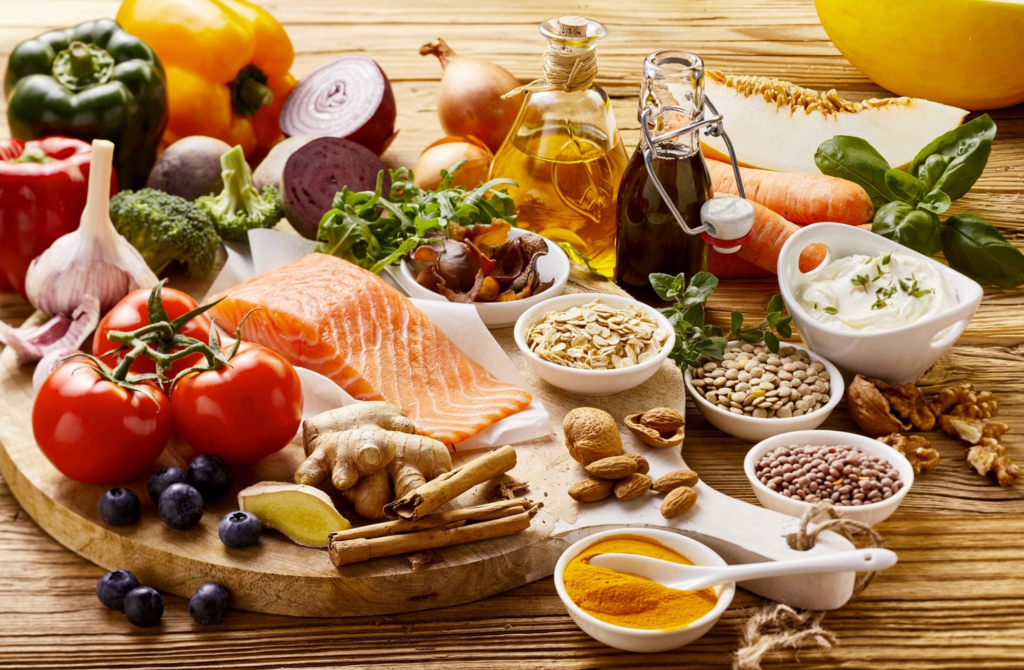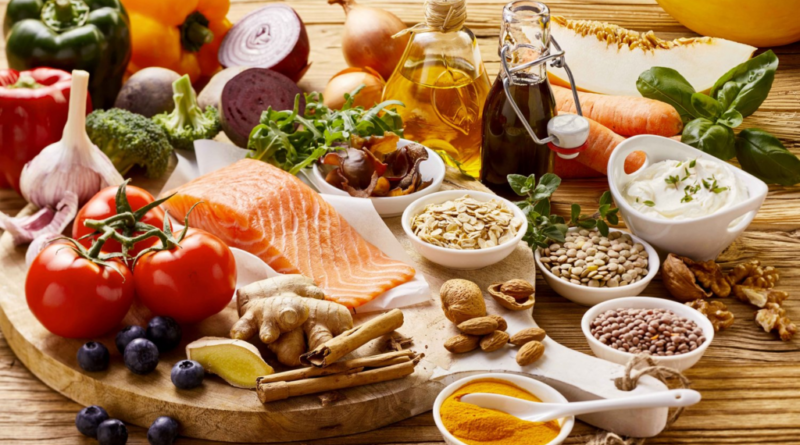Balanced Diet Tips: Combining Nutrition and Taste for a Healthier You

A balanced diet is the cornerstone of good health, helping to maintain energy levels, improve mental clarity, support immune function, and even reduce the risk of chronic diseases. But when we think of “healthy eating,” many of us imagine bland, tasteless meals. The good news is, you don’t have to sacrifice flavor to eat well. With some creativity and understanding of nutrition basics, you can create a balanced diet that is not only nutritious but also delicious. This article will provide practical tips for achieving that balance between nutrition and taste for a healthier you.
What Is a Balanced Diet?
Before diving into tips, let’s clarify what a balanced diet entails. A balanced diet provides all the essential nutrients—macronutrients (carbohydrates, proteins, and fats) and micronutrients (vitamins and minerals)—in appropriate proportions to support overall health. The key is to consume a variety of foods to ensure that your body gets all the nutrients it needs.
A balanced diet typically includes:
- Fruits and vegetables (for vitamins, minerals, and fiber)
- Whole grains (for energy, fiber, and essential nutrients)
- Lean proteins (for muscle repair, immune support, and energy)
- Healthy fats (for brain function and heart health)
- Dairy or alternatives (for calcium and other key nutrients)
Now that you know what a balanced diet consists of, let’s explore how to combine nutrition and taste in your everyday meals.
1. Embrace the Rainbow of Fruits and Vegetables
Fruits and vegetables are loaded with essential vitamins, minerals, and antioxidants that protect the body from various diseases. To ensure you’re getting a wide range of nutrients, aim to eat a variety of colors. Each color signifies different nutritional benefits. For example:
- Red fruits and vegetables (tomatoes, strawberries, red peppers) are rich in antioxidants like lycopene.
- Green foods (spinach, kale, broccoli) are loaded with vitamins A, C, and K, as well as iron and calcium.
- Orange and yellow produce (carrots, oranges, sweet potatoes) provide beta-carotene and vitamin C, essential for immune function.
- Blue and purple fruits (blueberries, eggplant, grapes) contain anthocyanins, which are good for heart health and memory.
- White foods (cauliflower, garlic, onions) are high in nutrients like potassium and magnesium.
How to Make It Tasty:
Incorporate fruits and vegetables into every meal by trying new preparation methods like grilling, roasting, or sautéing with herbs and spices. You can also add fresh or dried fruits to salads for a natural sweetness or blend vegetables into smoothies for an easy, nutrient-packed breakfast.
2. Prioritize Whole Grains over Refined Grains
Whole grains such as quinoa, brown rice, oats, and whole-wheat bread are rich in fiber, B vitamins, and minerals like magnesium and iron. Unlike refined grains, whole grains contain all parts of the grain, which means more nutrients and fiber.
Fiber is crucial for maintaining digestive health, regulating blood sugar levels, and keeping you feeling full for longer, which can help with weight management.
How to Make It Tasty:
Instead of sticking to just one type of grain, experiment with different whole grains. Try using quinoa or farro as a base for salads, or swap white pasta for whole-grain alternatives. Cook grains in vegetable or chicken broth rather than water to add more flavor. You can also toast grains before cooking to enhance their nutty flavor.
3. Choose Lean Proteins
Proteins are vital for building and repairing tissues, making enzymes, and supporting the immune system. They can be found in both animal and plant sources. Aim to include lean proteins like:
- Poultry (chicken, turkey)
- Fish (especially fatty fish like salmon and tuna for heart-healthy omega-3s)
- Eggs
- Legumes (lentils, beans, peas)
- Nuts and seeds
- Low-fat dairy (milk, yogurt, cheese)
- Tofu and tempeh (for plant-based options)
By opting for leaner protein sources, you can lower your intake of unhealthy fats and calories while still getting the protein you need for muscle repair and other essential body functions.
How to Make It Tasty:
Season your proteins with herbs, spices, and marinades to infuse them with flavor. For example, try marinating chicken breasts in a mixture of olive oil, garlic, and lemon juice before grilling. When cooking legumes, experiment with different spices, such as cumin, paprika, or turmeric, to add a kick to your dish.
4. Incorporate Healthy Fats
Fats have often been misunderstood, but they play an essential role in your diet. Healthy fats, such as unsaturated fats, support brain health, hormone production, and the absorption of fat-soluble vitamins like A, D, E, and K. Key sources of healthy fats include:
- Olive oil
- Avocados
- Nuts and seeds (like almonds, chia seeds, and flaxseeds)
- Fatty fish (like salmon and mackerel)
- Nut butters (peanut, almond, cashew)
Avoid trans fats and limit saturated fats found in processed foods and red meats.
How to Make It Tasty:
Use avocado as a creamy base for toast or in smoothies. Drizzle olive oil over salads or use it as a cooking base for sautéed vegetables. Snack on nuts, or mix them into yogurt for a satisfying, nutrient-packed crunch. You can also make your own salad dressings using olive oil, lemon juice, and herbs for a fresh, homemade flavor.
5. Control Portion Sizes
Even when eating healthy, portion control is crucial. Eating too much of even the healthiest foods can contribute to weight gain and imbalances in your diet. A simple method for managing portions is to follow the “plate method”, which involves:
- Filling half of your plate with vegetables and fruits
- Filling a quarter of your plate with lean proteins
- Filling a quarter of your plate with whole grains
This visual guideline can help ensure that you’re getting the right amount of each food group while maintaining a balanced intake of calories.
How to Make It Tasty:
Serve meals on smaller plates to create the illusion of a larger portion. This can help prevent overeating. Also, focus on mindful eating, which involves paying attention to hunger and fullness cues, as well as savoring the flavors of your food.
6. Stay Hydrated
Water is a vital part of a balanced diet and is often overlooked. Proper hydration supports digestion, nutrient absorption, and overall energy levels. Drinking water before and during meals can also help control appetite and prevent overeating.
You can also include water-rich foods like cucumbers, watermelon, oranges, and leafy greens in your diet to stay hydrated.
How to Make It Tasty:
If plain water feels too boring, add slices of fresh fruit like lemon, lime, or cucumber for a burst of flavor. Herbal teas or sparkling water can also be refreshing alternatives without added sugar.
7. Limit Added Sugars and Salt
Excessive intake of added sugars and salt can contribute to weight gain, high blood pressure, and an increased risk of chronic diseases like heart disease and diabetes. Keep an eye on the ingredients of packaged foods, as sugar and salt are often hidden in unexpected items like bread, sauces, and snacks.
To satisfy your sweet tooth without relying on processed sugars, opt for natural sources like fruits, honey, or maple syrup in moderation. When it comes to salt, experiment with herbs, spices, and citrus zest to enhance the flavor of your meals without the need for excessive sodium.
How to Make It Tasty:
Instead of adding sugar to oatmeal or yogurt, top them with fresh or dried fruits for natural sweetness. Replace table salt with flavorful herbs and spices like rosemary, thyme, cumin, and turmeric when cooking. Use lemon juice or vinegar to add brightness to dishes without needing extra salt.
8. Plan Your Meals
One of the best ways to ensure you’re eating a balanced diet that satisfies both nutrition and taste is to plan your meals ahead of time. When you plan meals, you’re more likely to make healthier choices and avoid reaching for processed, convenient options that are often high in sugar, salt, and unhealthy fats.
Meal prepping—preparing meals or key ingredients ahead of time—can save you time during the week and reduce the temptation to order takeout.
How to Make It Tasty:
Create a weekly menu featuring a variety of dishes with different flavors and textures to keep things interesting. Batch cook grains, chop vegetables, and prepare protein-rich meals like grilled chicken or lentils ahead of time to have healthy, delicious options ready to go. Incorporate different cuisines—such as Mediterranean, Asian, or Mexican—in your meal plan to keep your taste buds engaged.
Conclusion
Achieving a balanced diet doesn’t mean sacrificing flavor. By embracing a variety of colorful fruits and vegetables, whole grains, lean proteins, healthy fats, and mindful portion sizes, you can enjoy meals that are both nutritious and delicious. Focus on meal planning, hydration, and moderation when it comes to sugar and salt, and you’ll be on the path to a healthier, tastier lifestyle. Eating well can and should be enjoyable—so let your creativity shine in the kitchen and start experimenting with these balanced diet tips today!

